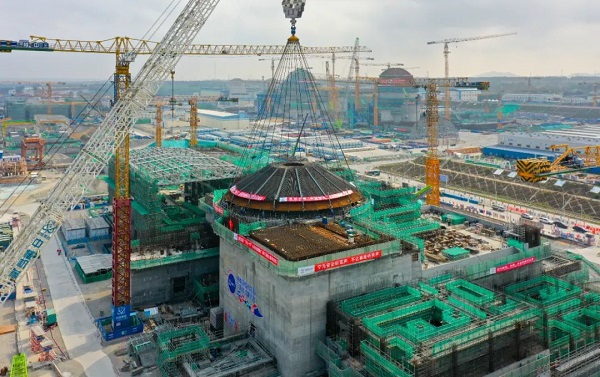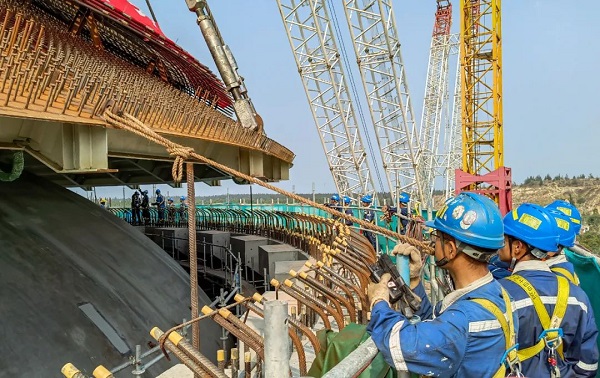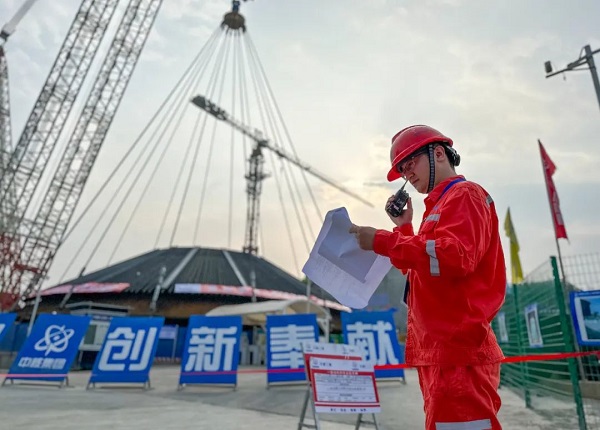The Linglong One completes external dome installation
China National Nuclear Corporation (CNNC) announced that the external dome of the Linglong One, the world's first onshore modular small reactor, was successfully hoisted into place at the nuclear power base in Changjiang, Hainan. After a series of high-precision movements, the 550-ton dome was positioned onto the outer containment shell of the reactor building.

The installation of the external dome signifies that the main structure of the reactor building has been fully constructed, laying a foundation for the subsequent roofing. It also validates the feasibility of the integrated modular hoisting of the steel roof and reinforced steel for the nuclear island, providing valuable experience for the modular development of nuclear power.

The Linglong One, following in the success of the Hualong One, represents a significant achievement in China's nuclear power innovation and has broad global market prospects. It is designed not only for power generation but also for heating, steam production and seawater desalination. As a highly secure distributed clean energy source, it can be deployed near towns and industrial parks, enabling nuclear energy to be close to cities and users.
Upon its completion, the Linglong One will have an annual power generation of 1 billion kWh, enough to meet the needs of 526,000 households. It will reduce 880,000 tons of CO2 emissions annually, which is equivalent to planting 7.5 million trees. Its application not only contributes to China's carbon peak and neutrality goals but also promotes the safe development and innovation of nuclear power, playing a crucial role in providing green energy security.

With advantages such as safety, flexibility in deployment, and versatility, small modular reactors (SMRs) are playing an increasingly prominent role in the nuclear energy technology transformation and international industrial competition. According to the International Atomic Energy Agency (IAEA), there are over 80 types of SMR technologies being developed globally. Countries like the United States and the United Kingdom have included SMR technology in their national strategies.
- China Institute of Atomic Energy
- Nuclear Power Institute of China
- Southwestern Institute of Physics
- China Nuclear Power Operation Technology Corporation, Ltd.
- China Nuclear Power Engineering Co., Ltd.
- China Institute for Radiation Protection
- Beijing Research Institute of Uranium Geology (BRIUG)
- China Institute of Nuclear Industry Strategy (CINIS)
- China Nuclear Mining Science and Technology Corporation


